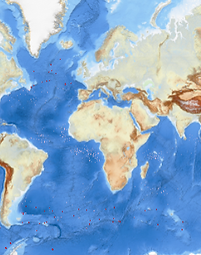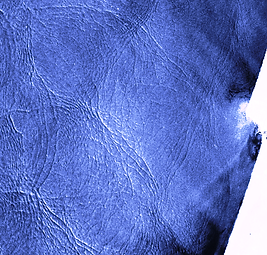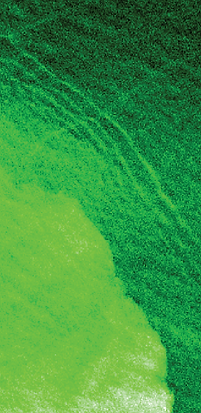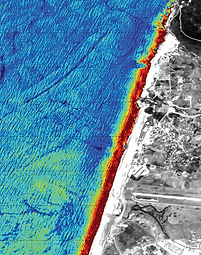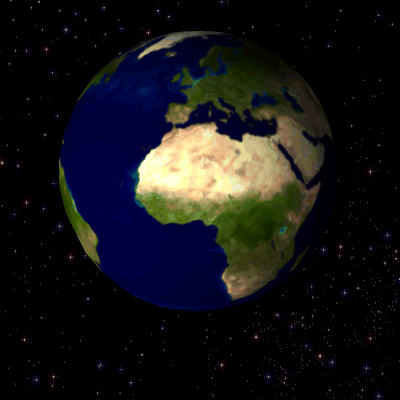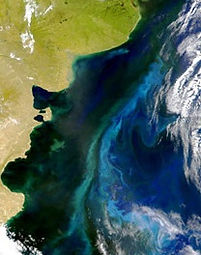Relevant Publications
A series of relevant publications by the authors follows below, with Remote Sensing views of Internal Waves around the world. Proper introductory text books on oceanic and atmospheric Internal Waves may be found, for instance, here (by Theo Gerkema and J.T.F. Zimmerman) and here (by Carmen J. Nappo), respectively.
Internal Solitary Wave parameters from SWOT KaRIn sea surface topography: a case study in the Tropical Atlantic
2025 (Satellites, theory, and models joining hands to perceive the ocean down below)
Check out how to estimate ISWs' amplitudes without in situ measurements.
Longevity of internal solitary waves in the Pacific Cold Tongue: synergies with SWOT
2025 (How long can ISWs survive within the Pacific Cold Tongue)
Check out how ISWs wander about in the Pacific Ocean within the Pacific Cold Tongue.
Shear instabilities in ISWs under high and low-wind regimes
2025 (When sky and sea team up to mix things up)
Check out how Wind and ISWs can combine to mix coastal waters.
Aiming to map Internal Waves worldwide
2025 (Artificial Intelligence put to work to help us map Internal Waves)
Check out the the first global, operational platform for automatic detection of internal solitary waves (ISWs) from Synthetic Aperture Radar (SAR) imagery... and more.
Check out the near-real time ISW map here:
Turbulent dissipation along contrasting internal tide paths off the Amazon shelf from AMAZOMIX
2025 (Strong mixing measured off the Amazon shelf as Internal Tides propagate offshore)
The Amazon shelf break is an important region where strong internal tides are generated, playing a substantial role in climate processes and ecosystems through vertical dissipation and mixing. During the AMAZOMIX survey (2021), turbulence was measured at internal tide generation and propagation paths. A key finding was the relative increase in turbulent dissipation from two distinct generation sites at the shelf break. This area of high mixing coincided with a region of potential constructive interference of IT rays originating from different generation sites. It also aligned with the occurrence of large-amplitude internal solitary waves (ISWs), suggesting that constructive IT ray interference may generate nonlinear ISWs that lead to enhanced dissipation.
.
A multidisciplinary study to investigate phytoplankton coastal dynamics
2023 (New physical and biological evidence of lateral transport affecting dinoflagellate cyst distribution in the benthic nepheloid layer along a land-sea transect off Figueira da Foz)
A multidisciplinary oceanographic campaign (HABWAVE) sampled phytoplankton (dinoflagellate) cysts at different water depths in the water column and in the bottom sediments, and measured physical properties (temperature, salinity, density and suspended sediment concentration), along a land-sea transect off Figueira da Foz (NW Portugal) to investigate the dinoflagellate cyst distribution and the factors (physical and biological) affecting it. Furthermore, Lagrangian particle experiments enabled simulating cyst trajectories in the BNL 5 and 10 days before sampling and assessing cross-shore, vertical and alongshore transport within the studied region.
Global ocean models looking into Internal Wave energetics
2023 (Nonlinear Internal Tides in a Realistically Forced Global Ocean Simulation)
Ocean tides generate internal waves at steep ridges and continental shelves in a stratified ocean. In some regions with strong tidal forcing, surface intensified stratification, and weak background rotation, these waves are observed to steepen into solitary-like waves. In this process, energy is transferred from the tidal band to higher (supertidal) frequencies and wavenumbers. This study investigates “internal tide steepening” in a realistically forced global. Along the internal tide beams, the supertidal energy transfers are enhanced in regular spaced “patches” where longer and faster mode 1 semidiurnal internal tides overtake the shorter and slower mode 2 internal tides.
Using Remote Sensing to study higher Internal Wave modes in the ocean
2023 (Spatial and temporal variability in mode-1 and mode-2 internal solitary waves from MODIS-Terra sun glint off the Amazon shelf)
The Amazon shelf is a key region for intense internal tides (ITs) and nonlinear internal solitary wave (ISWs) generation associated with them. The region shows well-marked seasonal variability which can induce changes in the ISW physical characteristics. The description of the seasonal and neap–spring tidal variability in the ISWs off the Amazon shelf is performed for the first time using a meaningful data set composed of 140 MODIS-Terra imagery from 2005 to 2021, where about 500 ISW signatures were identified in the sun glint region. Previous studies have documented the existence of mode-1 ISWs, but the region appears as a newly described hotspot for mode-2 ISWs.
Unifying conventional and SAR altimetry via Internal Solitary Waves
2023 (Using a Tandem Flight Configuration between Sentinel-6 and Jason-3 to Compare SAR and Conventional Altimeters in Sea Surface Signatures of Internal Solitary Waves)
Satellite altimetry has been providing a continuous record of ocean measurements since 1992. However, the new Sentinel-6 provides synthetic aperture radar (SAR) processing improves the along-track resolution of conventional altimeters from a few kilometres (e.g., for Jason-3) to about 300 metres. This means a major leap in sampling towards higher frequencies of the ocean spectrum, which inevitably means reconciling the assumption of a uniform Brown surface between the footprints of the larger kilometre-scale conventional altimetry and those of the finer-scale SAR altimetry.
Are Internal Waves arriving on time?
2022 (Short timescale variability in large-amplitude internal waves on the western Portuguese shelf)
Are internal Waves a predictable phenomenon?
Internal waves, surface waves, wave breaking and satellite views
2021 (Surface Wave Breaking Caused by Internal Solitary Waves: Effects on Radar Backscattering Measured by SAR and Radar Altimeter)
How is satellite radar remote sensing surveying sea surface signatures from internal waves which include surface wave breaking?
Can two Internal Waves play teamwork to grow stronger?
2021 (Using SAR imagery to survey internal solitary wave interactions: A case study off the Western Iberian shelf)
Can satellite remote sensing survey internal wave interactions?
Rivers and Oceans shaking hands on Internal Waves
2021 (On the generation of internal waves by river plumes in subcritical initial conditions)
Can satellite remote sensing and numerical simulations team-up to study subcritical internal wave generation?
Long-lived mode-2 Internal Waves in the Andaman Sea
2020 (Numerical modelling of long-lived internal waves in the Andaman Sea)
Can SAR and numerical simulations team-up to study the details of internal wave systems?
SAR mode altimetry peaking at Internal Solitary Waves
2019 (SAR-Mode Altimetry Observations of Internal Waves in the ocean: A Method of Detection)
An algorithm is developed to detect ISWs in the ocean by means of wavelets and mean square slopes.
Combining models and remote sensing to study Internal Waves
2019 (Numerical modelling of tidally generated internal wave radiation from the Andaman Sea into the Bay of Bengal)
Take a look at two different models and satellite remote sensing to see if internal wave systems can mix the ocean.
Satellite Remote Sensing helping our fight against pollution
2019 (Monitoring Morocco coastal waters for As, Fe and P concentrations using ESA Sentinels-2 and 3 data)
Using Sentinel data to assess pollution off the coast of Tangier: an exploratory study.
Internal Waves in the Andaman Sea: new insights from SAR
2018 (Internal Solitary Waves in the Andaman Sea: new insights from SAR imagery)
Take a look at two different internal systems operating side-by-side in the Andaman Sea.
SAR mode altimetry peaking at Internal Solitary Waves
2018 (SAR Mode Altimetry Observations of Internal Solitary Waves in the Ocean: Case Studies)
Take a look at SAR altimetry performing as it observes ISWs.
Image credit: ESA.
Internal wave packets dealing with rotation
2017 (Modelling and observations of oceanic nonlinear internal wave packets affected by
the Earth’s rotation)
Can rank-ordered packets of ISWs be rearranged as rotational effects increase?
Image credit: Wikimedia.
Internal waves along the Malvinas current
2017 (Internal Waves along the Malvinas current: evidence of transcritical generation in satellite imagery)
200 leagues of near-continuous internal waves along the Patagonian shelf-break.
Image credit: NASA's Goddard Space Flight Center.
How tall are internal waves when measured from space?
2017 (Satellite Altimetry Observations of Large-Scale Internal Solitary Waves)
Can satellite altimetry see the waves down below?...
Image credit: Jet Propulsion Laboratory.
Internal waves feeding the ocean’s little guys
2017 (Role of internal waves on mixing, nutrient supply and phytoplankton community structure during spring and neap tides in the upwelling ecosystem of Ria de Vigo)
High frequency Internal Solitary Waves are found propagating within Ria de Vigo. What are they doing there?
Intense Internal Solitary Waves on the Amazon shelf
2016 (Transcritical Flow and Generation of Internal Solitary Waves off the Amazon River)
High frequency Internal Solitary Waves are found running across the Amazon River mouth.
Powerful Internal Solitary Waves off the Amazon River
2016 (Effect of the North Equatorial Counter Current on the generationand propagation of internal solitary waves off the Amazon shelf, SAR observations)
Check out what powerful current such as the Noth Equatorial Counter Current can do to fast propagating Internal Waves, propagating nearby the Amazon River mouth.
Powerful Internal Solitary Waves in the Middle of the Indian Ocean
2015 (Internal waves on the upstream side of a large sill of the Mascarene Ridge: a comprehensive view of their generation mechanisms and evolution)
In this paper we aim to clarify the generation of Internal Solitary Waves at work to the east of the Mascarene Plateau (Indian Ocean) using Synthetic Aperture Radar imagery and MITgcm fully nonlinear and nonhydrostatic simulations.Some of the generation processes described here may be easily overlooked and could be at work in many more regions of the world than previously thought.
Interacting Internal Tides Enhacing Chlorophyll in the Bay of Biscay
2014 (Chlorophyll enhancement in the central region of the Bay of Biscay as a result of internal tidal wave interaction)
A multi-sensor satellite approach based on ocean colour, sunglint and Synthetic Aperture Radar imagery is used
to study the impact of interacting internal tidal waves on near-surface chlorophyll-a distribution in the
central Bay of Biscay.
.
Airborn views of Internal Solitary Waves
2013 (On the detectability of internal waves by an imaging lidar)
The first results of a multisensor airborne survey conducted off the western Iberian Coast are presented (including visible, lidar, and infrared imagery) and reveal the presence of internal solitary waves propagating into the nearshore region. For the first time, two-dimensional lidar imagery is shown to detect the presence of these waves, and the results are interpreted in a more comprehensive framework provided by the remaining instrumentation.
Internal Solitary Waves in one of world's largest underwater banks
2013 (Internal solitary waves on the Saya de Malha bank of the Mascarene Plateau: SAR observations and interpretation)
In this paper we focus on ISWs propagating in the shallow water above the Saya da Malha. Analysis of an extended SAR image dataset reveals strong sea surface signatures of complex patterns of ISWs propagating over the bank and arising from different sources.We identify three distinct types of waves, and propose suitable generation mechanisms for them using synergy from different remotely sensed datasets, together with analyses of linear phase speeds (resulting from local stratification and bathymetry). Finally, we consider the implications of the ISWs for mixing and biological production over the SM bank, and provide direct evidence, from ocean colour satellite images, of enhanced surface chlorophyll over a shallow topographic feature on the bank, which is consistent with the breaking of the ISWs.
.
Misterious Internal Solitary Waves in the Red Sea
2012 (Internal solitary waves in the Red Sea: An unfolding mystery)
The Red Sea is identified as a new hotspot for oceanic internal solitary waves. Satellite observations reveal trains of solitons that, surprisingly, appear to propagate from the center of the Red Sea, where it is deepest, toward the continental shelf, but they do not survive as coherent structures over the shelf. Despite the fact that these Red Sea solitons have large amplitudes, they appear to be generated by very weak surface tides. The appearance of these waves over this particular geographical stretch suggests generation by a locally amplified internal tide on the main pycnocline. We consider three possible explanations for soliton generation in the Red Sea: interfacial tide resonance, local generation by internal tidal beams generated at the shelf breaks, and local generation by internal tidal beams generated at the shelf breaks but first amplified by repeated focusing reflections.
.
A Review on the Generation of Internal Solitary Waves
2012 (The generation of nonlinear internal waves)
Nonlinear internal waves are found in many parts of the world ocean. Their widespread distribution is a result of their origin in the barotropic tide and in the variety of ways they can be generated, including by lee waves, tidal beams, resonance, plumes, and the transformation of the internal tide. The differing generation mechanisms and diversity of generation locations and conditions all combine to produce waves that range in scale from a few tens of meters to kilometers, but with all properly described by solitary wave theory. The ability of oceanic nonlinear internal waves to persist for days after generation and the key role internal waves play in connecting large-scale tides to smaller-scale turbulence make them important for understanding the ocean environment.
Internal Solitary Waves in one of the largest promontories in the world
2012 (SAR observations of internal solitary waves generated at the Estremadura Promontory off the west Iberian coast)
A comprehensive dataset of Synthetic Aperture Radar (SAR) images from the west Iberian coast is used to identify the Estremadura Promontory as an oceanic hotspot for internal solitary waves. The full two dimensional
structure and the main physical properties of these waves are revealed for the first time. The overall propagation of the internal solitary wave field observed in the SAR images is evaluated, using a proxy measure for energy
based on observed wavelengths, crestlengths and radar backscatter intensities. A refraction pattern is found to divert the meridionally propagating waves to the east, where they eventually dissipate in the inner-shelf regions close to shore. The barotropic body force is calculated and the most likely generation locations are identified.
Local Generation under the Scope
2012 (Soliton generation by internal tidal beams impinging on a pycnocline: laboratory experiments)
In this paper, we present the first laboratory experiments that show the generation of internal solitary waves by the impingement of a quasi-two-dimensional internal wave beam on a pycnocline. These experiments were inspired by observations of internal solitary waves in the deep ocean from synthetic aperture radar (SAR) imagery, where this so-called mechanism of ‘local generation’ was argued to be at work, here in the form of internal tidal beams hitting the thermocline.
Large-scale Internal Solitary Waves in the Middle of the Indian Ocean
2011 (On the structure and propagation of internal solitary waves generated at the Mascarene Plateau in the Indian Ocean)
The first of a series of papers devoted to very large internal solitary waves in the Mascarene Ridge. Analysis of a comprehensive dataset of Synthetic Aperture Radar (SAR) images acquired over the sea area around the Mascarene Plateau in the western Indian Ocean reveals, for the first time, the full twodimensional spatial structure of internal solitary waves in this region of the ocean. The satellite SAR images show that powerful internal waves radiate both to the west and east from a central sill near 12.5S, 61.1E between the Saya de Malha and Nazareth Banks.
Large-scale Atmospheric Gravity Waves in the Red Sea
2011 (Atmospheric gravity waves in the Red Sea: a new hotspot)
The region of the Middle East around the Red Sea (between 32 E and 44 E longitude and 12 N and 28 N latitude) is a now a documented hotspot for atmospheric gravity waves (AGWs). Satellite imagery shows evidence that this region is prone to relatively high occurrence of AGWs compared to other areas in the world, and reveals the spatial characteristics of these waves. The favorable conditions for wave propagation in this region are illustrated with three typical cases of AGWs propagating in the lower troposphere over the sea. ERS-SAR and Envisat-ASAR satellite data analysis between 1993 and 2008 reveals signatures consistent with horizontally propagating large-scale internal waves. These signatures cover the entire Red Sea and are more frequently observed between April and September, although they also occur during the rest of the year.
Large-scale Atmospheric Gravity Waves in the Mozambique Channel
2009 (Satellite observations of large atmospheric gravity waves in the Mozambique Channel)
Satellite imagery (MODIS-Terra and Aqua, ASAR and MERIS-Envisat) reveals signatures consistent with horizontally propagating large-scale atmospheric gravity waves which are frequently observed during the winter season in the Mozambique Channel. We examine and characterize statistically the full horizontal structure of these atmospheric gravity waves. The waves were found to have dispersive average wavelengths ranging from 8.5 to 3.5km and a mean along-crest ‘coherence’ length of 443 km. The propagation characteristics of these
waves are examined using in situ and remote sensing measurements. The propagation speeds are estimated using two consecutive satellite images of the same wave-packet and are used as a proxy for the waves’ phase speeds. The Scorer parameter vertical profiles, calculated from available atmospheric soundings nearest to the satellite observations, were found to support wave propagation conditions. Some suggestions are presented regarding the influence of Moving Polar Highs in the generation and propagation of the observed waves.
Oceanic Internal Solitary Waves in the Mozambique Channel
2009 (Internal solitary waves in the Mozambique Channel: Observations and interpretation)
This paper presents new results showing that the Sofala shelf in the Mozambique Channel (20S, 36E) is a previously unknown ‘‘hot spot’’ for the generation of internal tides and internal waves. We investigate available Envisat advanced synthetic aperture radar imagery of the region, which is capable of showing the surface signatures of the internal waves. This is complemented by modeling of the ray pathways of internal tidal energy propagation, and of the P. G. Baines (1982) barotropic body force, which drives the generation of internal tides near the shelf break. The hot spot region is localized between 20 and 21S because of the particular nature of the bathymetry there.We have also investigated seasonal differences in the wave patterns, which penetrate more extensively into the channel during the southern summer and appear slightly farther to the south during the southern winter. We conclude that the local generation process is more likely to occur during the winter when
the stratification is reduced.
Internal Solitary Waves in the Massachusetts Bay - Cape cod
2008 (Synthetic Aperture Radar observations of resonantly generated internal solitary waves at Race Point Channel, Cape Cod)
Synthetic Aperture Radar images revealed the two-dimensional propagation characteristics of short-period internal solitary waves in Race Point Channel in Massachusetts Bay. The images and in situ measurements of the flow in the channel are used to infer the likely generation mechanism of the waves. The solitary waves are
generated during the ebb phase of the tide within the channel. On some occasions, two trains of internal waves are generated presumably at the same location but at slightly different phases of the ebb tide. Both packets propagate upstream when the tide slacks, but with slightly different propagation directions.
Remote Sensing Laying a hand to Local Generation
2002 (Remote-sensing evidence for the local generation of internal soliton packets in the central Bay of Biscay)
Large-amplitude internal solitary waves (or ‘‘solitons’’) occurring in packets near the shelf break in the Bay of Biscay are well-documented and understood. The presence of similar features has now also been reported in the central Bay, 150km from the nearest shelf break topography. The present paper analyses available remote-sensing synthetic aperture radar (SAR) data from the ERS satellites in this region. By doing so, we are able to provide convincing support for the hypothesis that these waves, instead of having travelled along the thermocline from the shelf break, are instead generated locally in the central Bay by the surfacing of a beam of internal tidal energy originating from the shelf break. This reinforces the results of a previous independent study, while at the same time providing a much more extensive investigation than was then possible.
PhD thesis - Prof. José da Silva
1997 (The Role of Surface Films in ERS SAR Signatures of Internal Waves on the Iberian Shelf)
On the darkest night the stars shine most brightly.
When the radar clutter is dark Internal Waves show up bright.
A pioneering work on how surface films on the ocean surface can influence the sea surface signatures of Internal Waves.



